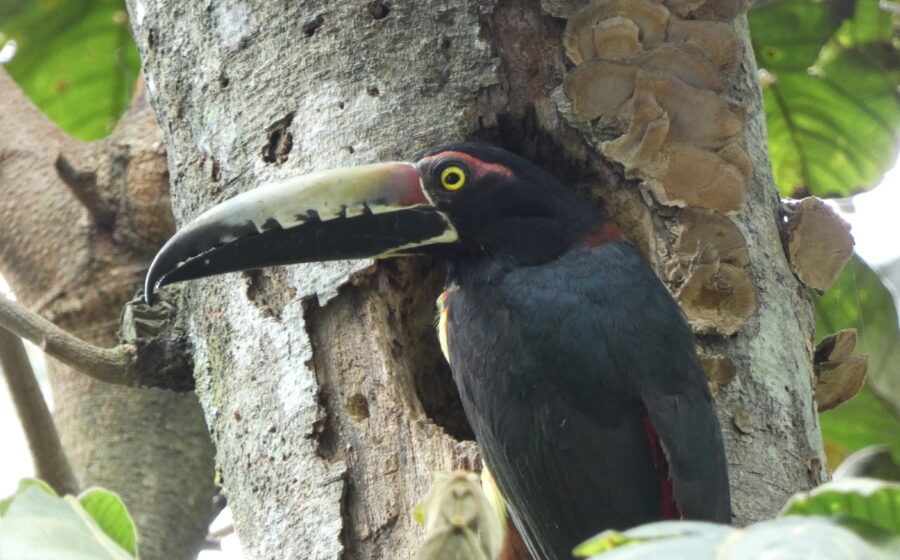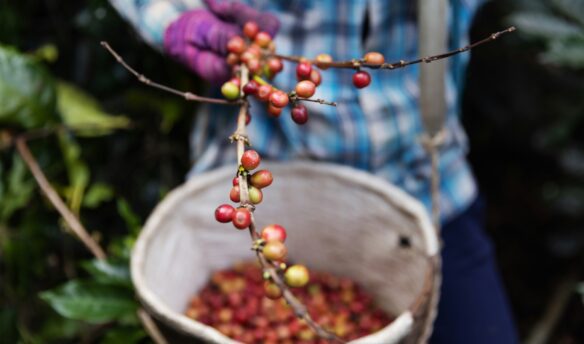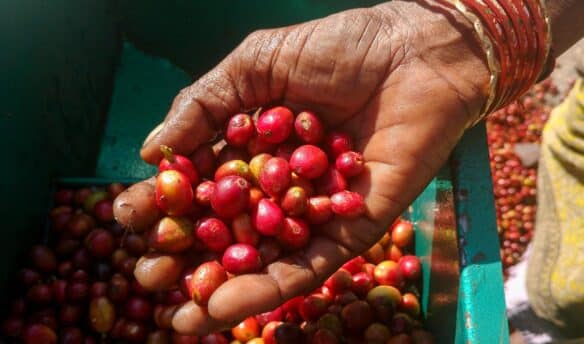Most coffee production happens in tropical climates, with farms concentrated between the Tropic of Cancer and the Tropic of Capricorn. Regions closer to the equator have more plant and animal diversity than areas further away from the equator, known as the latitudinal diversity gradient. Basically, the closer you are to the equator, the more available sunlight and energy and fewer risks of losing species due to freezes, meaning more plants—and more animals.
Farming is often at odds with protecting biodiversity, including coffee production. According to the Smithsonian National Zoo & Conservation Biology Institute, “75% of the world’s coffee is farmed with practices that leave no place for birds, or worse, actively destroy forest habitat.” However, there are places where local communities are making significant efforts to balance coffee farming, diversity, and conservation to preserve natural resources for the future.
Some farms are working to preserve the native flora and fauna while cultivating local coffee varieties, while other regions have robust conservation programs or parks incorporating coffee as a local plant. Growing coffee while still encouraging diversity might look different all around the world.
A Guatemalan Coffee Farm Full of Flora and Fauna
Central America is known for its many species of colorful plants and animals, with this region containing 12% of the biodiversity of flora and fauna on the planet. Dariush Echeverria is a coffee producer at Finca Ceylan y Anexos in the Chimaltenango region of Guatemala, east of Guatemala City.

Finca Ceylan y Anexos focuses on coffee as its main cash crop, mainly growing varieties like Red and Yellow Bourbon, Typica, Catuai, and Sudan Rume, along with a smattering of Gesha and Pacamara plants.
The farm has multiple fruit trees, including bananas, plantain, oranges, lemons, guava, acerola cherry (a tart and sweet berry often juiced or frozen), and avocado. These are mainly for Echeverria’s consumption and local sales, but they also offer shade to coffee plants, helping preserve the farm’s biodiversity. “Our shade is made up of over 50 different species of shade trees and includes a variety of fruit trees,” says Echeverria.
Echeverria’s farm is a Smithsonian Bird Friendly® certified farm, meaning it is 100% organic and has been inspected by a Smithsonian-approved 3rd party to evaluate shade habitats. “Our farm is shade-grown, and we have mostly local species of shade trees throughout the fields,” says Echeverria. “This gives us incredible diversity. We have been certified bird-friendly for over 15 years.”
Local varieties of shade trees are preferable to other shade plants for protecting bird populations and biodiversity—researchers from the University of Delaware found that having only non-native shade trees can have negative implications, potentially causing soil erosion and could be as harmful to biodiversity as full-sun coffee growing.
Along with birds, Echeverria says his farm hosts a wide diversity of large and small wildlife. “We also have a variety of mammals: white-tailed deer, guitzitil (a small deer), tepezcuintle, armadillo, ocelot, white-nosed coati, river otter, gopher, weasel, opossum, yaguarundi, margay and squirrels,” he says.
The tiniest forms of life might be the most important for farm and crop health. According to Echeverria, “Insects are also on the top list of diversity, from beetles of all shapes and colors, through ants that are edible, like zompopo de mayo (leaf cutter ants) and our favorites, pollinators: bees, stingless bees, wasps, hornets and butterflies.” Pollinators are crucial to supporting diversity and agriculture worldwide, with 75% of flowering plants and 35% of food crops depending on pollinators. Research from the University of Vermont has shown that coffee beans are bigger and plants have a higher yield when bees and birds are active in their environment.
Our farm is shade-grown, and we have mostly local species of shade trees throughout the fields. This gives us incredible diversity. We have been certified bird-friendly for over 15 years. Dariush Echeverria
Echeverria recognizes the value of biodiversity, but his farm is just a small piece battling against seismic agricultural changes in Guatemala. Coffee production in Guatemala is decreasing (falling 12% since 2021) and being replaced by crops like macadamia and avocado as climate change reduces coffee yields and farmers’ incomes. Monoculture plantations have replaced some shade-grown coffee farms, and unregulated logging, poaching, and hunting continue to threaten wildlife habitats. Also, the weather has been much drier this year, with only 50% of the rain from last year, according to Echeverria. Guatemala is part of a region in Central America known as The Dry Corridor, a narrow strip of land between the Pacific and Atlantic with a high risk of extreme climate events like droughts.
However, there have been some encouraging signs: “We have seen an increase in wildlife diversity (and numbers) in our property, as it is a small haven in the area,” says Echeverria. “Our fields provide food, shelter, clean water, and safety.”
“We have a family of toucanets that are around the main farm facilities,” he says. Toucanets, birds that are part of the toucan family, are often targeted by poachers and sold as pets, and at least 11 different species of toucans face extinction due to deforestation and illegal hunting. But farms like Echeverria’s provide threatened animals a safe place to live. “We watched them nest and saw the three fledglings take flight back in May this year. A wonderful sight.”
Renewal and Restoration at Gorongosa Coffee National Park
Coffee production in Mozambique peaked in the early and middle of the 20th century, but production levels fell during the country’s civil war from 1977 to 1992. Current coffee exports are small, with less than $100,000 in coffee exports in 2021. However, in 2022, Mozambique joined the International Coffee Organization, renewing its aim to build strong coffee export connections. Recent reports estimate the current production level is about 800 tons of green coffee.
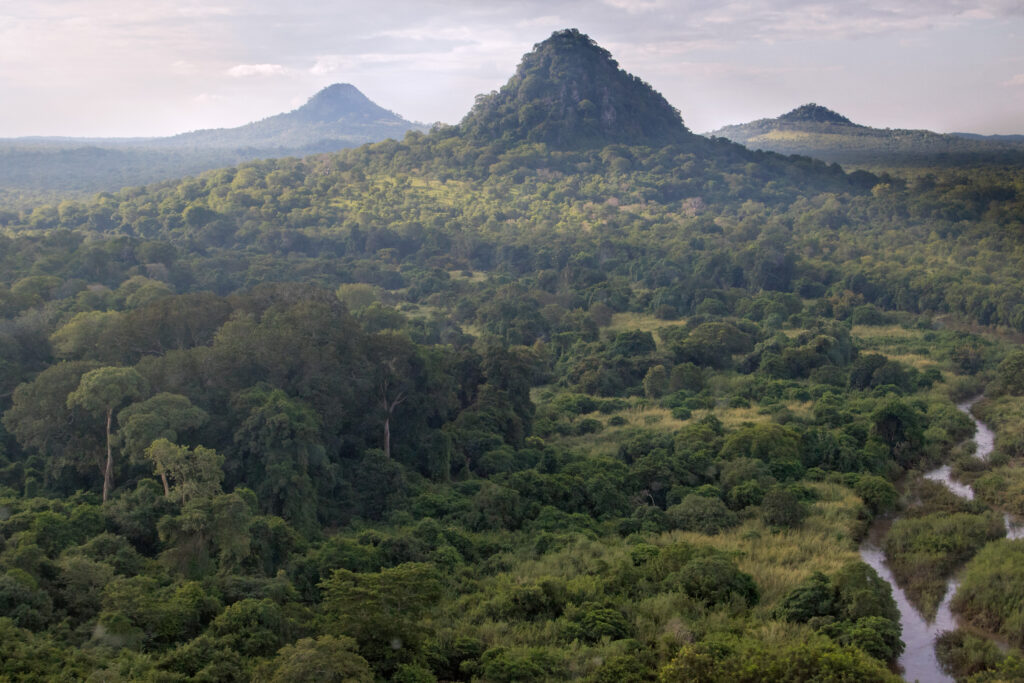
Gorongosa National Park, a 1500 square mile park in the Rift Valley home to 200,000 people, was directly affected by conflict throughout that time. In 1981, park staff were kidnapped by resistance fighters. In 1983, the park was shut down, remaining abandoned for nine years, and the area suffered a high loss of wildlife between 1970 and 2000.
Now, the national park’s primary mission is conservation and restoration. Recovery is beginning for park wildlife, including elephants, pangolins, zebras, and birds—thanks to conservation efforts, the park is now home to 150 lions.
In the late 2000s, park staff slowly added coffee seedlings to Gorongosa Mountain, hoping the forest land could be restored. They also planted fast-growing native trees to provide shade, and in 2011, the first coffee cherries grew and ripened.
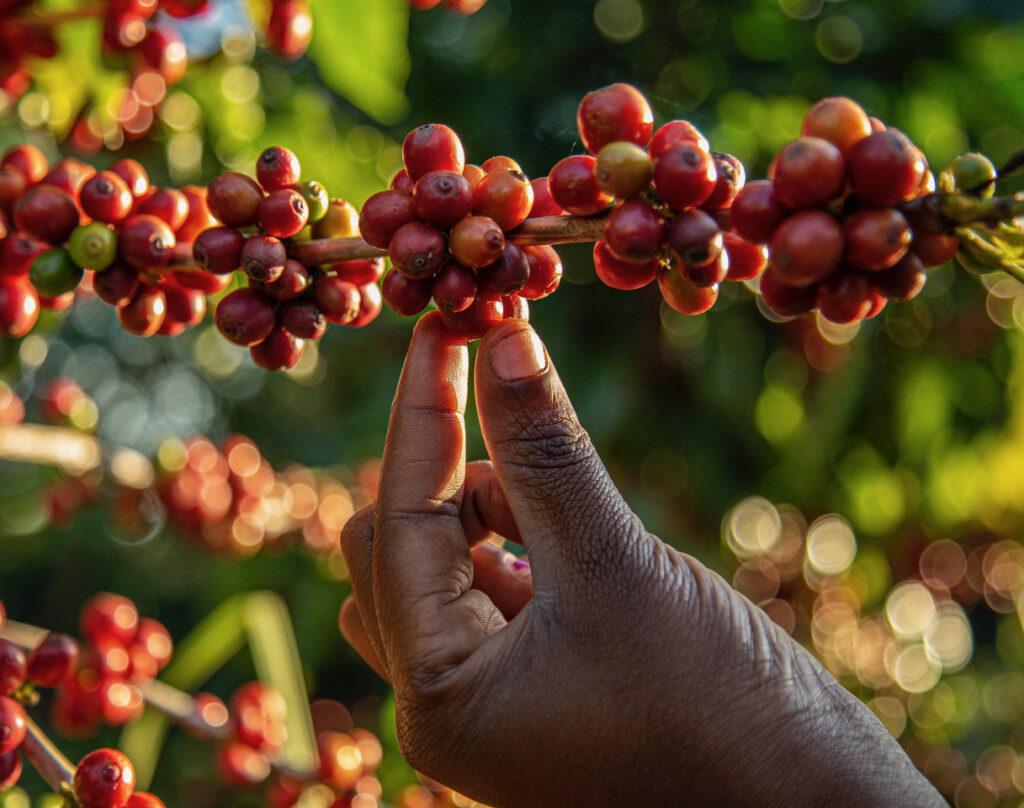
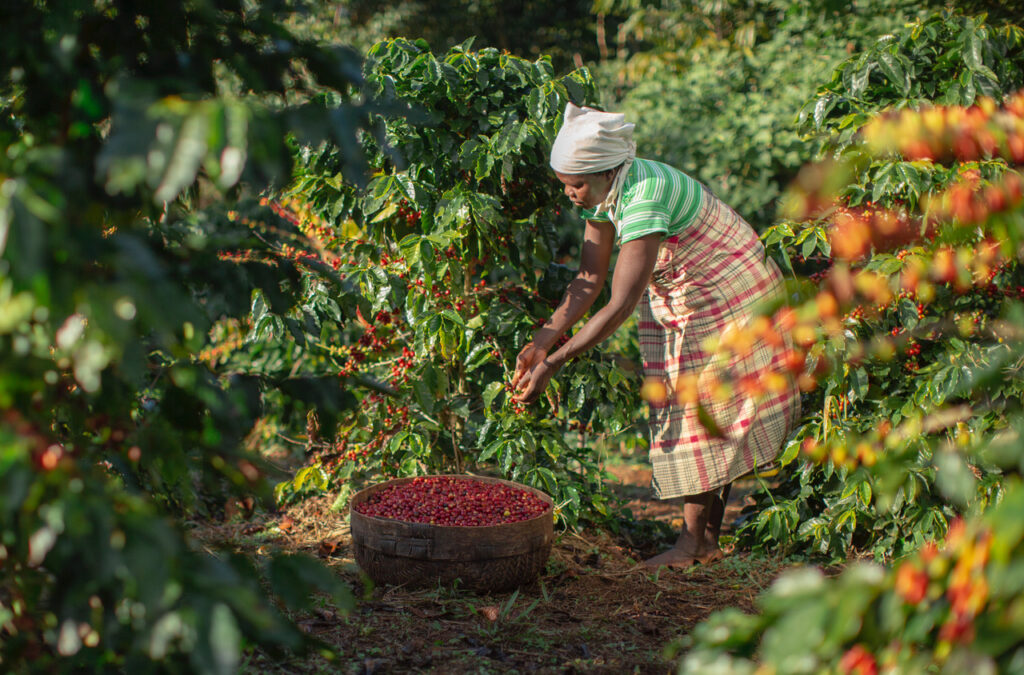
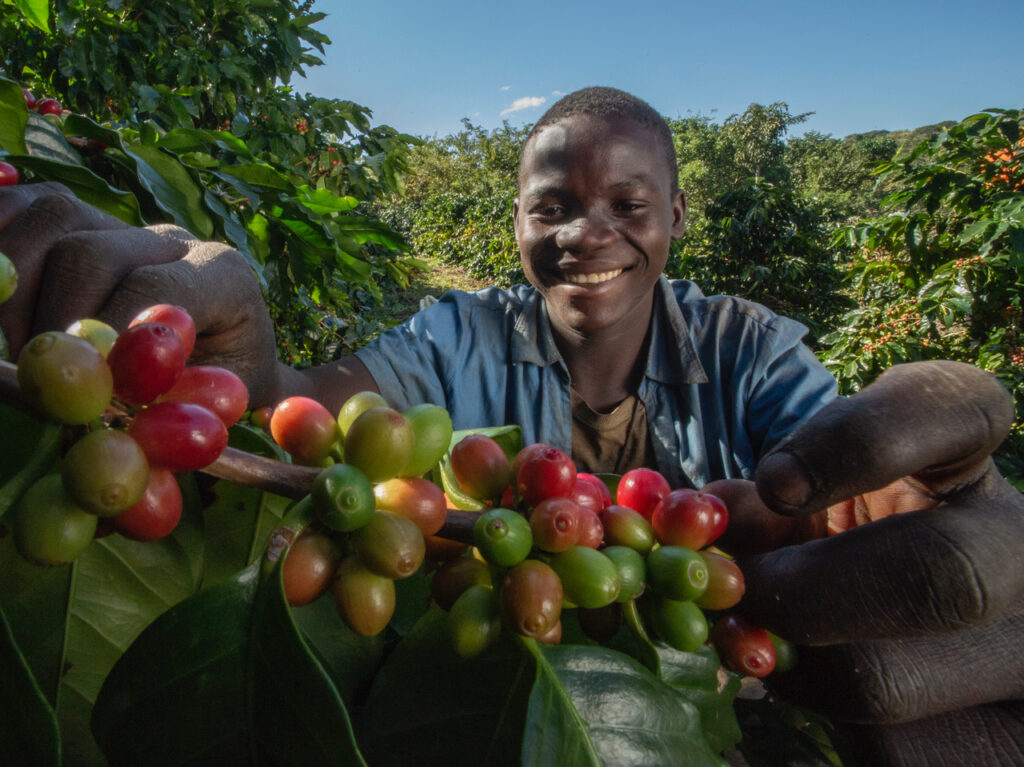
“The focus of the coffee project is on the most degraded areas,” says Sofia Molina, Director of Natural Products at Gorongosa. “The objective is to use coffee as a vector for reforestation by using a valuable cash crop that will allow the local communities to plant native trees and also use the land to produce other crops for family consumption while the canopy takes over. These traditional crops include maize, bean, pigeon pea, pineapple, and others.”
Since Gorongosa staff started the coffee growing program from scratch, they were able to choose the varieties best suited to Gorongosa’s unique climate and growing conditions. “We grow mainly two varieties from the Arabica species,” says Molina, “namely Catimor and Costa Rica, chosen originally for its hardiness and adaptation to other similar latitudes in Africa.”
With these efforts bearing fruit, Gorongosa has become the largest coffee producer in Mozambique. As of 2021, the coffee project has created 400 additional jobs, and around 800 families are growing coffee. Optimism is rising as the team explores new initiatives and future opportunities in coffee production. “We are also currently trialing nine other varieties to test their adaptation to our local conditions,” says Molina. “They are currently being evaluated to choose the best-adapted ones before expanding their planting.”
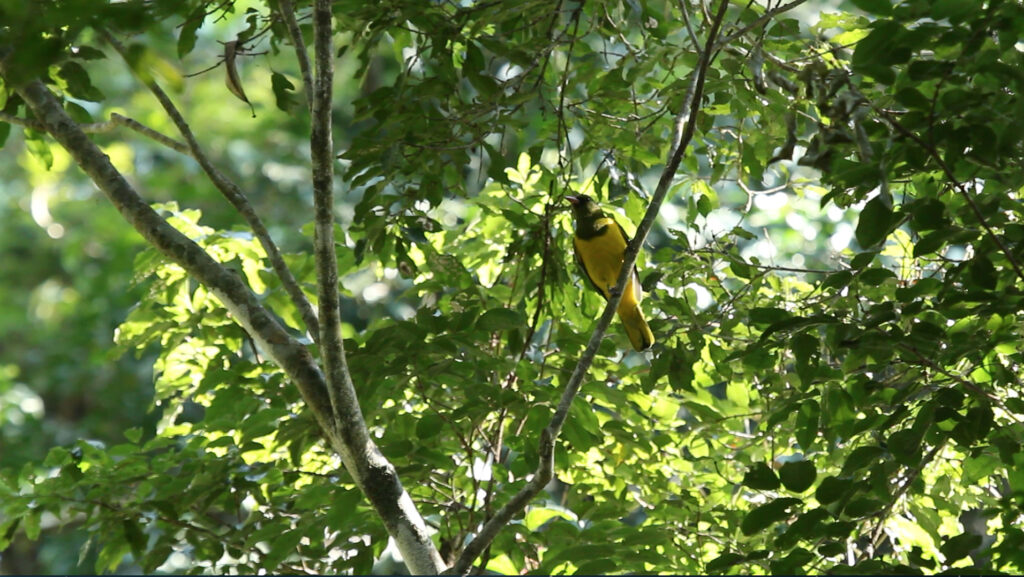
Biodiversity faces multiple foes, like climate change and shifting economic conditions, and it’s clear coffee’s fate is directly tied to preserving the diversity of flora and fauna around the world. But coffee can also provide a solution, proving that by working with nature, farmers and communities can continue to develop preservation techniques and methods to adapt to current challenges and keep coffee around for years to come.
Cover photo courtesy of Dariush Echeverria



